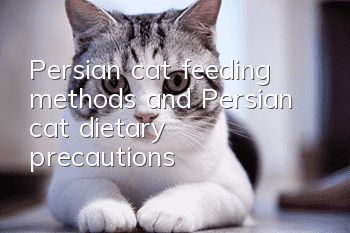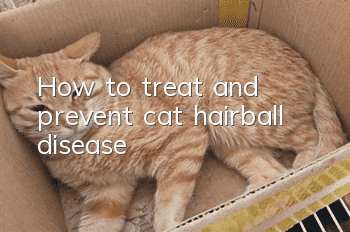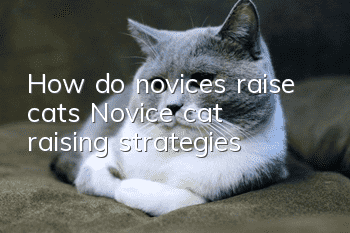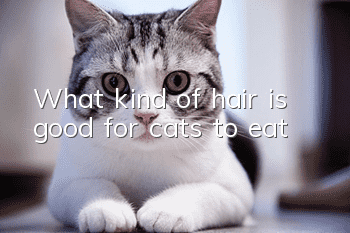Persian cat feeding methods and Persian cat dietary precautions

The Persian cat has elegant and gorgeous hair, coupled with its beautiful face, making it the most popular breed in the world, making them known as the "Prince of Cats". They are sweet and gentle, and once they find a sense of security in their new environment, they will quickly integrate into the family, making the family harmonious and warm. There must be many owners of Persian cats who are sometimes speechless about the diet of Persian cats. They will eat no matter how much food they give them. So how many meals does a Persian cat eat a day? I believe that all owners would also like to know this question. The editor will lead everyone to understand the relevant knowledge of Persian cat diet.
How many meals does a Persian cat eat a day?
Adult Persian cat feeding
Adult Persian cats only need to be fed 1-2 times a day. If adult Persian cats also have gastrointestinal diseases, the feeding principle should also be to eat less and more meals. Make sure that the Persian cat is 80% full every time, and just touch the abdomen with your hands to see that it is neither bulging nor deflated.
Little Persian cat feeding
For Persian cat kittens, the younger they are, the more times they should be fed every day. Just ensure that the little Persian cat is full of food each time, and neither feed it more nor feed it less. Generally, Persian kittens aged 2-4 months are best fed 4-5 meals a day; Persian cats aged 4-8 months are fed 3-4 meals a day; Persian cats around 1 year old are fed 4-5 meals a day. Feed 3 meals. Of course, for elderly Persian cats, feeding them 3 regular and quantitative meals a day is basically enough. Note that you should ensure that the Persian cat is full every time. You can neither feed it more nor feed it less. How many times a day and how much should you feed the Persian cat in one meal? As a parent, you should make a scientific decision based on the actual situation of the Persian cat. Feeding can ensure the healthy growth of Persian cats. Depending on the age of the cat, the specific feeding times are also different. Become a good cat parent. Scientifically formulate a feeding plan, feed and prepare food reasonably according to the cat’s needs.
Precautions for Persian cat diet:
1. Persian cats are very sensitive to changes in their food plates and sometimes refuse to eat because their food plates are changed. Keep food dishes clean. Newspaper or plastic paper can be placed under the food plate to prevent the sound of the food plate sliding and make it easy to clean. Every time the Persian cat eats leftover food, throw it away or put it away, mix it with fresh food and cook it before feeding it next time.
2. Feeding should be done at a fixed time. Once the Persian cat's "meal" biological clock is formed, it is relatively fixed and should not be changed at will. The place where cat food is placed should be fixed. Persian cats do not like to eat in places with noisy noises and strong light. If guests come to visit, do not let the guests look at your cat while the Persian cat is eating. The appearance of strangers will greatly disturb your cat. Reduce Persian cat’s appetite.
3. Persian cats use claw hooks to pick up food or take food out of the food plate to eat.Habit. Once this phenomenon is discovered, it must be corrected immediately.
4. Persian cats like to eat warm food. Cold food and cold food not only affect the cat’s appetite, but can also easily cause digestive disorders. Under normal circumstances, the appropriate temperature of food is 30 to 40 degrees. Food taken out of the refrigerator should be heated before feeding. Persian cats sometimes eat grass to promote digestion.
- Ways to correct abnormal food intake in cats: anorexia, bulimia and pica
- Why does a cat often vomit cat food?
- How to feed a kitten that is not yet one month old? The most correct way to raise a kitten!
- What should I do if my cat just arrives home and hides out of fear?
- Can cats raise azaleas?
- Signs of worms in cat’s belly
- Is it uncomfortable for cats and hens to squat?
- How does a cat express when it wants to poop?
- Why do cats have tears in their eyes?
- How to clean a cat’s ears?



